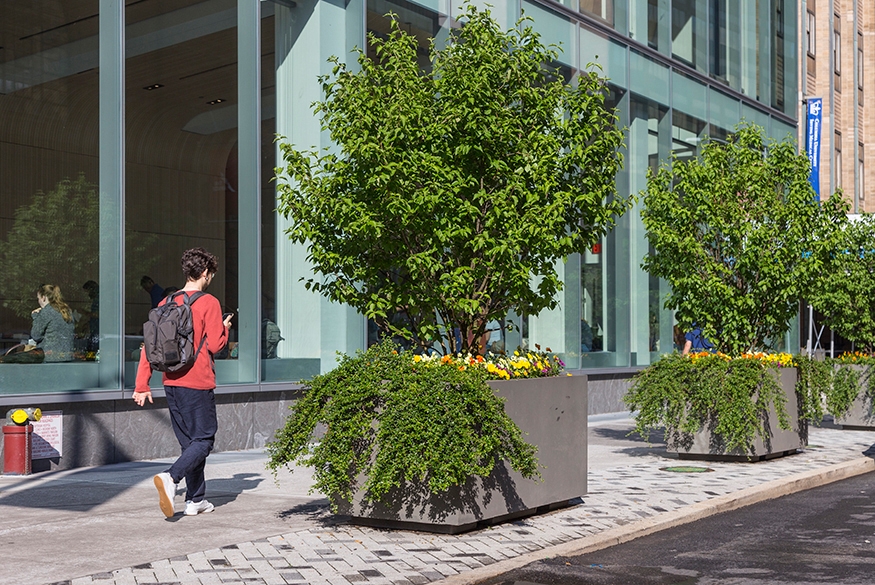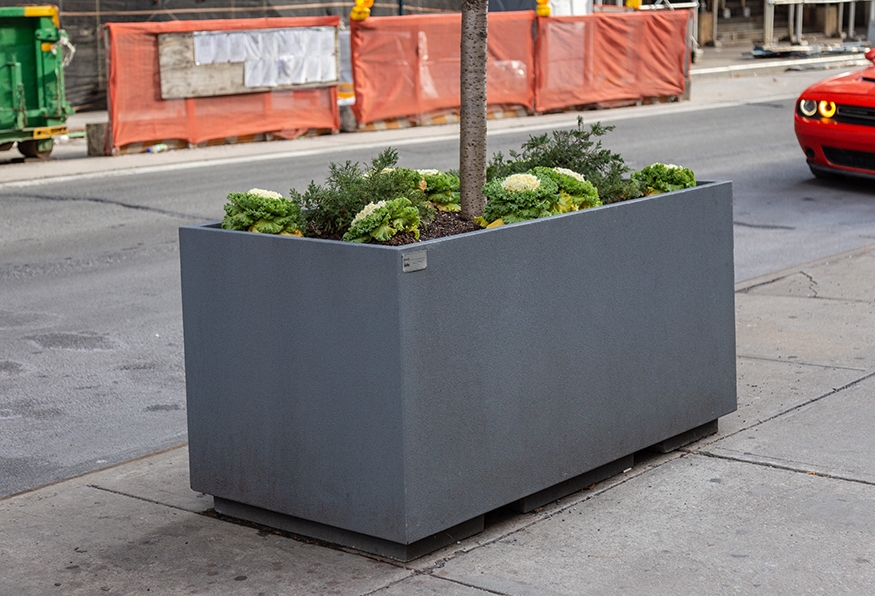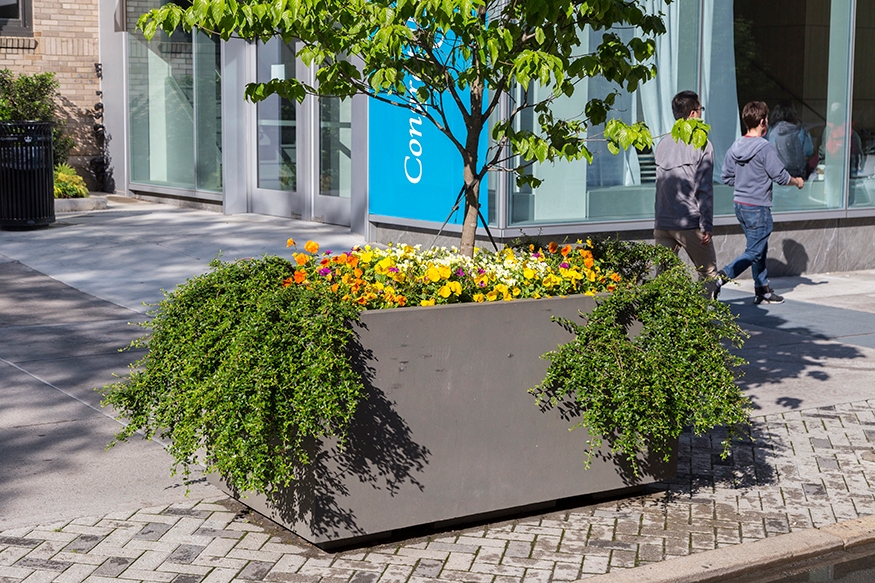Planters are decorative containers, of a variety of sizes and shapes, which support small trees and understory plantings including shrubs, grasses, perennials and bulbs. Planters are only permitted where in-ground trees or plantings cannot be achieved. When sited appropriately and properly maintained, planters provide many of the same benefits as in-ground plantings. Any planter installed on public ROW needs to be reviewed and approved by DOT and will require a maintenance agreement.


Benefits
See Benefits of Plantings in the ROW in the Introduction
- Planters allow for vegetation where in-ground planting is not feasible
Considerations
- Site planters so as to not displace legally operating street vendors
- Planters should be contextually appropriate, and special care must be taken when sited near artwork. PDC review is required for planters sited within 75 feet of an artwork
- Maintain pedestrian circulation and desire lines
- Consider the impact of planter dimensions on the visual corridor and avoid contributing to visual clutter or blocking sight lines of major thoroughfares.
- Consider integrating planters with adjacent privately-owned publicly-accessible space and look for opportunities to group planters together where spacing allows
- Consider the environmental and physical stresses plants must endure. Litter/debris, vandalism, and theft are all common; plants will have to accommodate wider swings in temperature as the soil is exposed
- Frequent watering is required to maintain healthy plants; ensure planters have proper drainage
- Planters may only be installed if a maintenance plan has been submitted and approved by DOT and an agreement is in place
Application
- Located only on sidewalks that cannot support standard street trees or in-ground planting; appropriate supporting documentation (utility plans, underground constraints, documentation from DPR, etc.) must be submitted to DOT with any application for planters
Design
Refer to DOT’s Permanent Planter Design Guidelines for more information; planters that follow these guidelines do not require PDC approval
See Planter in the Furniture chapter for further guidance on the design of the container
- Must be capable of providing suitable soil volume and drainage to allow small trees to thrive; planters should provide a minimum 54 cubic feet of soil volume and may vary in dimension, with a 3-foot height preferred and a maximum 4-foot height
- 8 feet or 50%, whichever is greater, of the sidewalk width must remain clear for 15 feet on either side of the planter
- When feasible, planters shall occupy no more than 25% of the sidewalk width
- Ensure a reveal on the bottom of the planter and design the planter to be moveable
- Planters should allow for uneven or sloped sidewalks while remaining level
- Provide positive drainage via appropriately designed weep holes or a similar method to prevent the accumulation of standing water
- Permanent planters must include a small-canopy tree; exceptions may be made in certain circumstances
- Ensure plants provide year-round interest or are rotated out each season so the planters are consistently filled; at no time should a planter be empty
- Plants should be drought-tolerant and one to two USDA zones hardier to increase winter survival potential as soil is less insulated. Plants should also be tolerant of limited soil volume and selected so as to not obstruct sight lines


